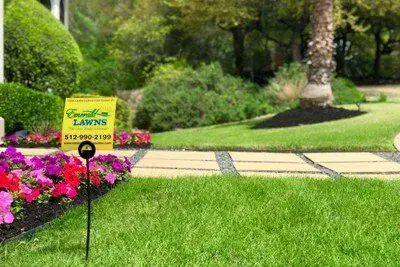San Antonio Tree Fertilization for Results You Can See
![]()
100% Satisfaction Guarantee
Get a Quote in 2.5 Minutes
Protect the Heart & Soul of Your Landscaping
Fertilization
Replenish minerals with broad-root feeding in spring & fall.
Disease Treatment
Fungus, leaf spot, powdery mildew, sooty mold, and blight, we treat them all.
Insect Control
Aphids, spider mites, caterpillars, whiteflies, or lace bugs? Not on our watch!

Fertilization
Replenish minerals with broad-root feeding in spring & fall.

Disease Treatment
Fungus, leaf spot, powdery mildew, sooty mold, and blight, we treat them all.

Insect Control
Aphids, spider mites, caterpillars, whiteflies, or lace bugs? Not on our watch!
Trees & Shrub Fertilization with Perfect Timing
Licensed Tree Disease Specialists in San Antonio
Services

Protection & New Year Rejuvenation

Root Zone Feeding & Bloom Accelerator

Insect & Disease Control and Prevention

Root Zone Feeding & Fall Harmonizer
"Service is always great!"
Manny service is always great, it doesn’t matter if I’m physically home watching him in person or watching him from my camera’s miles away without him knowing, the service he provides is unwavering.
"An amazing experience!"
Had an amazing experience with getting my sprinkler system checked and repaired. He made some great suggestions and improvements. He also was very knowledgeable and professional. I highly recommend him.
"My lawn is fuller and greener than ever."
Since using Emerald Lawns my lawn is fuller and greener than ever, even in these challenging conditions. Their technicians, like Alex, are very respectful of my property.
FAQS
- Bradford Pear
- Cypress Family – Arizona Cypress, Bald Cypress, Italian Cypress, Leyland Cypress
- Cedar Elm
- Lacebark Elm
- Magnolia
- Oak Family – Live Oak, Red Oak, Monterrey (White) Oak, Burr Oak, Post Oak, Chincapin Oak
- Red Bud
- Salvia
- Texas Ash
- Texas Mountain Laurel
- Silver Leaf Maple
- Agave
- Bicolor Iris
- Crepe Myrtle
- Cotoneaster
- Euonymus
- Gardenia
- Holly
- Iliagnus
- Indian Hawthorne
- Japanese Boxwood
- Japanese Yew
- Lantana
- Ligustrum
- Loropetilum
- Nandina
- Oleander
- Pittosporum
- Pyracantha
- Red Tip Photinia
- Roses, Rose of Sharon
- Red Yucca, Soft Leaf Yucca
- Sago Palm, Mexican Fan Palm
- Salvia
- Sky Pencil
- Texas Sage
- Veriagated Privet
- Viburnum
- Vinca
- Wax Myrtles
- Dwarf Yaupon, Yaupon Hollies



